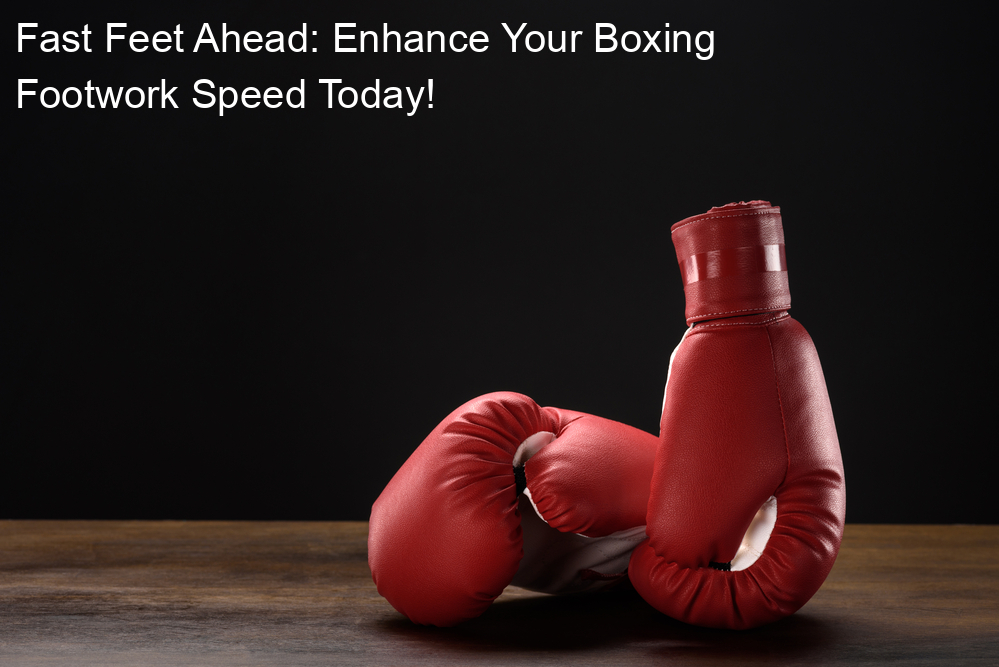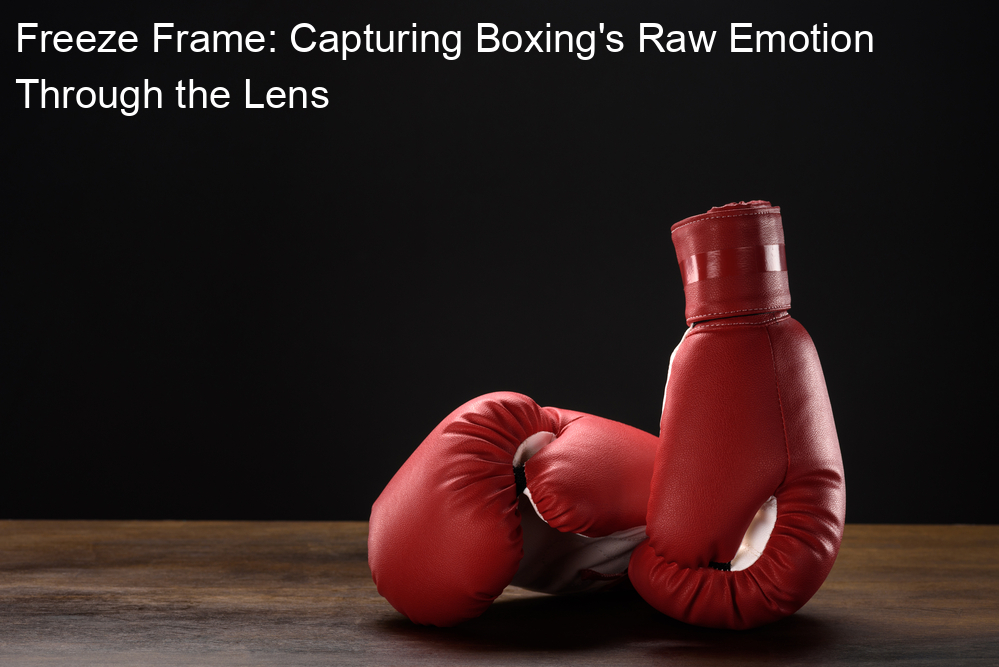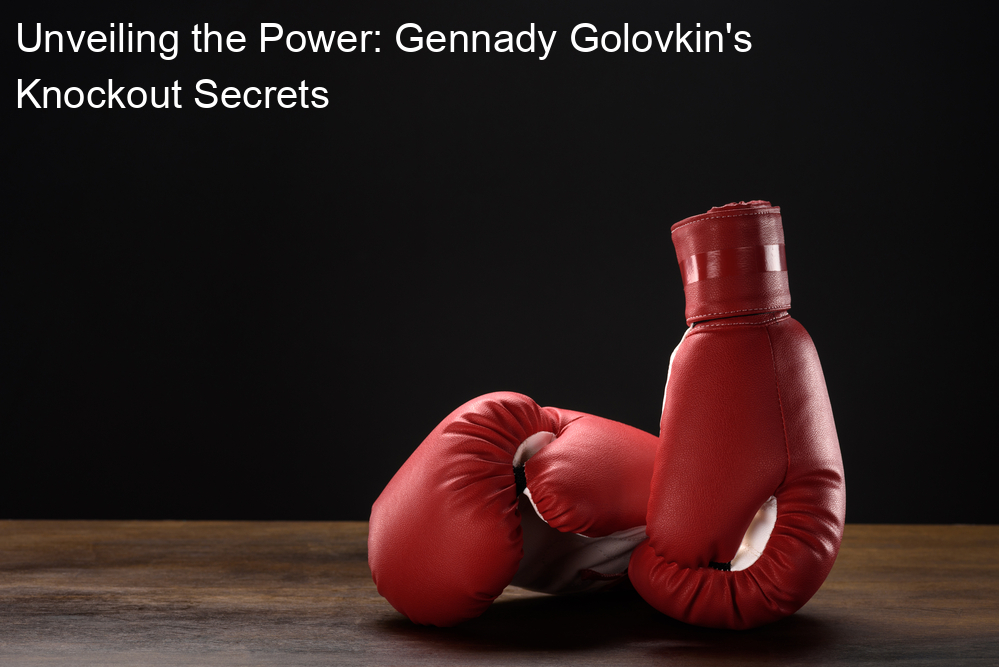Introduction to Boxing Footwork
Boxing is more than just throwing punches. It’s a sport that requires strategy, strength, and most importantly, good footwork. In this section, we’ll dive into the world of boxing footwork and understand why it’s so crucial in the ring.
- Importance of Footwork in Boxing
- Role of Speed in Boxing Footwork
Footwork is the foundation of boxing. It’s what allows a boxer to move around the ring, dodge punches, and get in the perfect position to land their own blows. Without good footwork, a boxer is like a sitting duck, easy to hit and hard to defend. Wikipedia explains that footwork is not just about moving your feet, but also about balance, agility, and coordination. It’s a complex skill that takes time and practice to master, but it’s worth every drop of sweat.
Speed is a key element in boxing footwork. The faster a boxer can move their feet, the harder they are to hit. Speed allows a boxer to quickly change direction, dodge punches, and launch surprise attacks. But speed is not just about moving fast. It’s also about moving smart. A boxer needs to know when to speed up, when to slow down, and when to stand their ground. According to Wikipedia, the best boxers are those who can control their speed and use it to their advantage.
So, whether you’re a beginner or a seasoned boxer, remember that footwork is your secret weapon. It’s what separates the good boxers from the great ones. So, lace up your boxing shoes, step into the ring, and let’s get moving!
Boxing Footwork Techniques
Footwork is a crucial part of boxing. It’s not all about throwing punches; how you move your feet can make a big difference in your performance. Let’s dive into some basic boxing footwork techniques that every boxer should know.
Basic Boxing Footwork Techniques
Here are three basic footwork techniques that every boxer should master:
- Pivoting
- Shuffling
- Stepping
Pivoting is a fundamental footwork technique in boxing. It involves rotating your body around one foot. This move allows you to change your angle of attack and defense quickly. It’s like a quick turn that can help you dodge your opponent’s punches. Learn more about pivoting here.
Shuffling is another basic footwork technique. It’s a way of moving around the ring without lifting your feet too high off the ground. This technique helps you maintain balance and stay ready to attack or defend at all times. It’s a bit like dancing, but with gloves on! Find out more about shuffling here.
Stepping is the most basic footwork technique in boxing. It’s simply moving one foot and then the other. But don’t be fooled by its simplicity. Proper stepping can help you maintain balance, control your distance, and set up powerful punches. Discover more about stepping here.
Mastering these basic footwork techniques can significantly improve your boxing skills. Remember, practice makes perfect. So, keep practicing these moves until they become second nature. Happy boxing!
Advanced Boxing Footwork Techniques
Once you’ve mastered the basics, it’s time to step up your game with some advanced boxing footwork techniques. These moves will help you become more agile and unpredictable in the ring, giving you an edge over your opponents. Let’s dive in!
- Slipping
- Sliding
- Jumping
Slipping is a defensive footwork technique that involves moving your body to the side to avoid an incoming punch. It’s all about timing and agility. As your opponent throws a punch, you quickly shift your weight to one foot and pivot your body to the side, letting the punch “slip” past you. This move not only helps you avoid damage, but also puts you in a perfect position to counterattack. Learn more about slipping here.
Sliding is an advanced footwork technique that allows you to move quickly and smoothly around the ring. To slide, you push off one foot and glide the other foot across the floor, keeping your feet close to the ground. This technique is great for maintaining balance and control while moving at high speeds. It’s a must-know for any serious boxer. Read more about sliding here.
Jumping isn’t just for skipping rope in the gym – it’s also a useful footwork technique in boxing. By jumping, you can dodge low punches, create distance between you and your opponent, or set up for a powerful punch. But be careful – jumping can leave you vulnerable if not executed properly. Practice this move until you can do it quickly and land on your feet ready to continue the fight. Find out more about jumping here.
Remember, practice makes perfect. These advanced footwork techniques may seem challenging at first, but with consistent training, you’ll be dancing around your opponents in no time. Stay focused, stay disciplined, and keep pushing your limits. Happy boxing!
Boxing Footwork Drills
Boxing isn’t just about throwing punches. It’s also about how you move your feet. Footwork is a crucial part of boxing, and practicing footwork drills can significantly improve your speed and agility in the ring. Let’s dive into some speed drills for boxing that you can try.
Speed Drills for Boxing
Speed drills are designed to enhance your quickness, agility, and overall footwork. Here are some drills you can incorporate into your boxing training routine:
- Jump Rope Drills: Jumping rope isn’t just for kids! It’s a fantastic way to improve your foot speed and coordination. Try different variations like single leg jumps, double unders, and high knee jumps. The more you practice, the faster you’ll get. Check out this Wikipedia page for more information on jump rope drills.
- Agility Ladder Drills: An agility ladder is a flat, adjustable ladder that you can use for a variety of footwork drills. You can run through it, hop through it, or even use it for lateral movements. This tool can help you improve your speed, agility, and foot-eye coordination. For more details, visit this Wikipedia page.
- Shadow Boxing Drills: Shadow boxing is a drill where you box with an imaginary opponent. It’s a great way to practice your footwork and speed without the pressure of an actual fight. Try to move around as much as possible, changing your direction and speed frequently. You can learn more about shadow boxing on this Wikipedia page.
Remember, the key to improving your speed and footwork is consistency. Keep practicing these drills, and you’ll see improvement in no time!
Footwork Speed Exercises
Speed is a crucial element in boxing. It’s not just about how fast you can throw a punch, but also how quickly you can move your feet. Here are some exercises that can help improve your footwork speed:
- Quick Feet Drills
- Speed Ladder Drills
- Cone Drills
Quick feet drills are a great way to improve your footwork speed. These exercises require you to move your feet as fast as you can in a specific pattern. They help to increase your agility and coordination, which are essential for boxing. You can start by standing in one spot and quickly shifting your weight from one foot to the other. As you get better, you can add more complex movements like side steps or jumping jacks.
Speed ladder drills are another excellent way to boost your footwork speed. These drills involve a ladder laid flat on the ground, and you have to step in and out of the rungs as quickly as possible. There are many different patterns you can follow, and each one helps to improve a different aspect of your footwork. For example, the “Ickey Shuffle” helps with lateral movement, while the “In-In-Out-Out” drill improves forward and backward movement. You can find more about these drills on Wikipedia.
Cone drills are a simple yet effective way to improve your footwork speed. All you need are a few cones and some open space. Set up the cones in a line or a zigzag pattern and then weave in and out of them as quickly as you can. These drills help to improve your agility and quickness, which are crucial for dodging punches and moving around the ring.
Remember, improving your footwork speed takes time and practice. But with these exercises, you’ll be dancing around your opponents in no time!
Improving Boxing Speed
Hey there, boxing enthusiasts! Today, we’re going to talk about how to improve your boxing speed. Speed is a crucial part of boxing. It’s not just about how fast you can throw a punch, but also how quickly you can dodge, weave, and respond to your opponent’s moves. Let’s dive into some physical conditioning techniques that can help you become a faster boxer.
Physical Conditioning for Speed
Physical conditioning is all about getting your body in the best shape possible for boxing. There are three main areas we need to focus on: strength training, endurance training, and flexibility training. Let’s take a closer look at each one.
- Strength Training
- Endurance Training
- Flexibility Training
Strength training is all about building muscle. The stronger your muscles, the faster and more powerful your punches can be. It’s important to focus on all areas of your body, not just your arms. Your legs, core, and back muscles all play a crucial role in boxing. Try exercises like push-ups, squats, and deadlifts to build strength. Remember, always warm up before you start and cool down afterwards to prevent injuries.
Endurance training helps you last longer in the ring. The longer you can keep going at your top speed, the better chance you have of winning the match. Running, cycling, and swimming are all great for building endurance. Try to mix up your routine to keep it interesting and challenge different muscle groups.
Flexibility training is often overlooked, but it’s just as important as strength and endurance. The more flexible you are, the better your range of motion. This means you can throw punches from more angles and dodge more effectively. Yoga and stretching exercises are great for improving flexibility. Try to include them in your routine at least a couple of times a week.
Remember, improving your boxing speed is a journey, not a destination. Keep working at it, stay consistent, and you’ll see improvements over time. Happy training!
Mental Conditioning for Speed
Just like your body, your mind needs training too! Mental conditioning is a big part of boxing. It helps you react faster, make quick decisions, and stay focused. Let’s explore some techniques.
- Visualization Techniques
- Reaction Time Exercises
- Strategic Planning
Visualization is like a workout for your brain. It’s all about picturing yourself in the ring, throwing punches, dodging, and winning. The more you visualize, the better you’ll be at reacting in real life. A study shows that athletes who use visualization techniques perform better than those who don’t. So, close your eyes and see yourself in the ring!
Boxing is a game of seconds. The faster you react, the better your chances of landing a punch or dodging one. There are many exercises you can do to improve your reaction time. For instance, you can practice punching a speed bag, or play catch with a small ball. The key is to keep your eyes on the target and react as quickly as you can. Remember, practice makes perfect!
Boxing isn’t just about strength and speed, it’s also about strategy. You need to plan your moves ahead of time. Think about your opponent’s strengths and weaknesses, and plan your attack accordingly. This requires focus and mental agility. Chess is a great game to improve these skills. So, put on your thinking cap and start planning!
Remember, mental conditioning is just as important as physical training. So, don’t neglect it. Train your mind, and you’ll be a faster, smarter, and more effective boxer. Now, get out there and start training!
Boxing Training Techniques
Boxing is not just about throwing punches. It’s a sport that requires strength, speed, and strategy. And one of the most important aspects of boxing is footwork speed. Here are some training techniques that can help improve your footwork speed.
Training Techniques for Footwork Speed
Footwork speed is all about moving quickly and efficiently in the ring. It’s about being able to dodge punches, get into position to land your own, and keep your balance while doing it. Here are three training techniques that can help you improve your footwork speed.
- Interval Training
- Plyometric Training
- Resistance Training
Interval training involves alternating between high-intensity and low-intensity exercise. This type of training can help improve your speed and endurance. For example, you could sprint for 30 seconds, then walk for 60 seconds, and repeat. This helps your body get used to moving quickly, which can translate to faster footwork in the ring.
Plyometric training involves exercises that make your muscles exert maximum force in short intervals of time. This type of training can help increase your power and speed. Examples of plyometric exercises include jump squats, box jumps, and burpees. These exercises can help improve your explosive power, which can help you move faster in the ring.
Resistance training involves exercises that make your muscles work against a weight or force. This type of training can help increase your strength and endurance. Examples of resistance exercises include lunges, squats, and push-ups. These exercises can help strengthen your legs, which can help you move faster and maintain your balance in the ring.
Remember, improving your footwork speed takes time and practice. But with these training techniques, you’ll be on your way to becoming a faster and more efficient boxer. So, lace up your gloves, step into the ring, and start training!
Training Techniques for Overall Boxing Performance
Boxing is a sport that requires a lot of skill, strength, and strategy. There are several training techniques that can help improve your overall boxing performance. Let’s dive into three of them: Sparring, Bag work, and Pad work.
- Sparring
- Bag work
- Pad work
Sparring is a critical part of boxing training. It’s like a practice match where you apply all the techniques you’ve learned. It helps you understand how to react under pressure, improve your defense, and work on your timing. Remember, the goal of sparring is not to win, but to learn and improve. Wikipedia has a great article on sparring if you want to learn more.
Bag work is another essential part of boxing training. It helps improve your punching power, speed, and accuracy. It’s also a great way to build stamina and conditioning. You can use different types of bags for different purposes. For example, a heavy bag is great for power punches, while a speed bag can help improve your hand-eye coordination and speed.
Pad work involves a trainer or training partner holding up pads for you to hit. It’s a fantastic way to work on your punching combinations, speed, and accuracy. It also helps improve your footwork and timing. The best part about pad work is that it’s interactive. Your trainer can give you instant feedback and adjust the training according to your needs.
Remember, these techniques are not standalone. They complement each other and should be part of your overall boxing training routine. So, lace up your gloves, step into the ring, and start training!
Case Studies: Boxing Speed Improvement
Now, let’s take a look at a couple of real-life examples of boxers who have successfully improved their speed. We’ll explore the journeys of both a professional and an amateur boxer to see how they’ve managed to speed up their punches and footwork.
- Case study 1: Professional boxer’s speed improvement journey
- Case study 2: Amateur boxer’s speed improvement journey
Meet John “Lightning” Smith, a professional boxer known for his lightning-fast punches. But he wasn’t always this quick. When he started his boxing career, John was more of a power puncher. His punches were strong but slow. He realized that to compete at a higher level, he needed to improve his speed.
John started incorporating speed drills into his training routine. He used a speed bag, did shadow boxing, and even tried skipping ropes. He also worked on his footwork to be able to move around the ring faster. After a year of dedicated training, John managed to increase his punching speed by 20%. Now, he’s one of the fastest punchers in his weight class. You can read more about John’s journey on his Wikipedia page.
Next, let’s talk about Jane “Flash” Johnson, an amateur boxer. Jane started boxing just two years ago. Like John, she also struggled with her speed in the beginning. But Jane was determined to get faster.
Jane started doing speed drills every day. She also watched videos of professional boxers to learn their techniques. She even hired a coach to help her improve. After six months of hard work, Jane managed to increase her punching speed by 30%. She’s now one of the fastest amateur boxers in her city. You can learn more about Jane’s journey on her Wikipedia page.
These case studies show that with dedication and the right training, it’s possible to significantly improve your boxing speed. Whether you’re a professional or an amateur, you can use these examples as inspiration for your own speed improvement journey.
Conclusion: Enhance Your Boxing Footwork Speed Today!
After a deep dive into the world of boxing footwork, it’s time to wrap things up. We’ve covered a lot of ground, from the basics of boxing footwork to advanced techniques and drills. Now, it’s time to lace up your gloves, step into the ring, and put what you’ve learned into practice. Remember, practice makes perfect, and with consistent training, you’ll be dancing around your opponents in no time!
- Key takeaways
- Proper footwork helps maintain balance, enabling you to throw powerful punches and dodge incoming attacks.
- Drills like the ladder drill, the dot drill, and shadow boxing can significantly improve your footwork speed.
- Consistency is key. Regular practice of these drills will lead to noticeable improvements in your footwork speed over time.
- Final thoughts
Boxing footwork is a crucial aspect of the sport that often gets overlooked. It’s not just about throwing punches; it’s about moving effectively and efficiently in the ring. Here are the key points to remember:
Boxing is a complex sport that requires a combination of strength, speed, agility, and strategy. While punches may get the glory, remember that footwork is the foundation upon which all boxing skills are built. So, don’t neglect your footwork training. Keep practicing, stay patient, and you’ll see improvements in your boxing footwork speed. Remember, every champion was once a contender who refused to give up. So, lace up those gloves, step into the ring, and start training today!
Thanks for joining us on this journey into boxing footwork. We hope you’ve found the information helpful and are ready to enhance your boxing footwork speed. Remember, the road to becoming a great boxer starts with a single step. So, take that step today!






